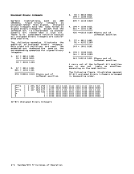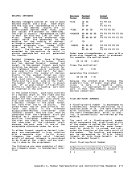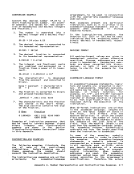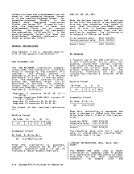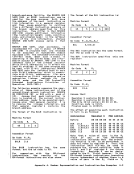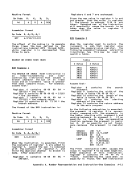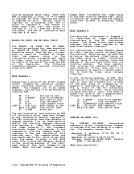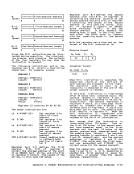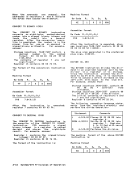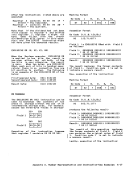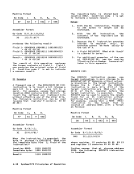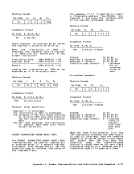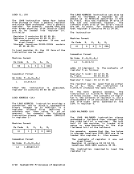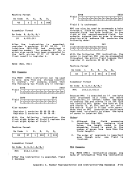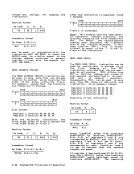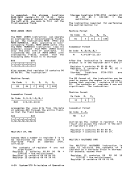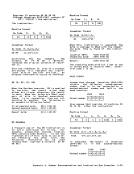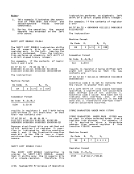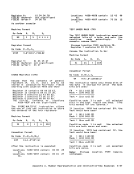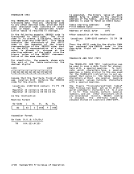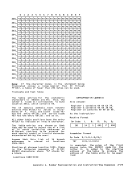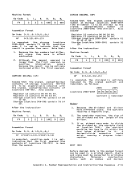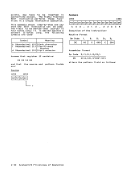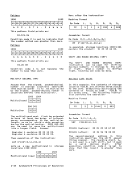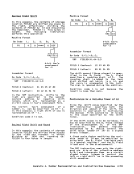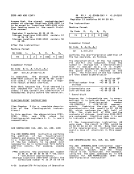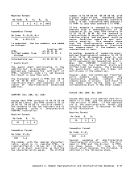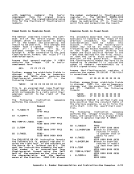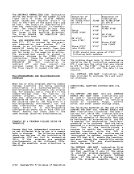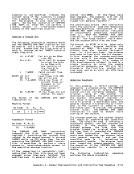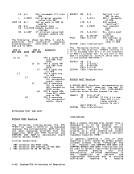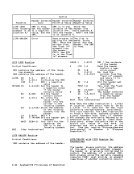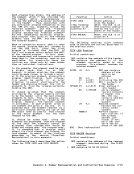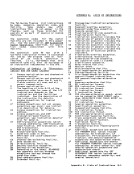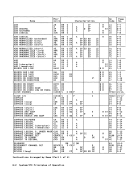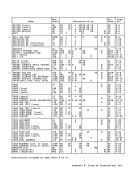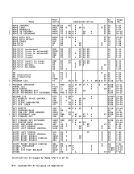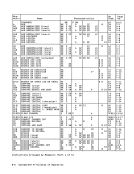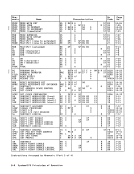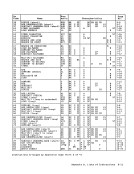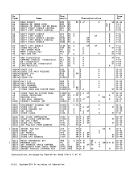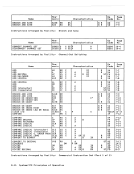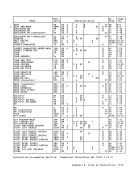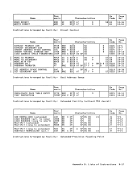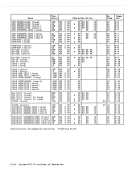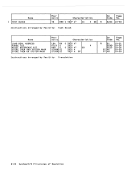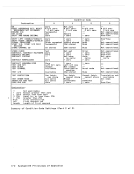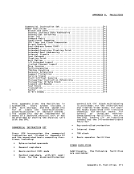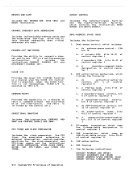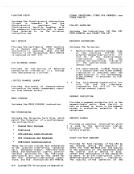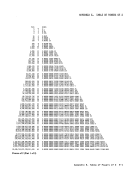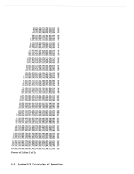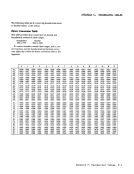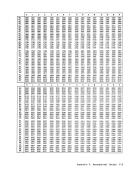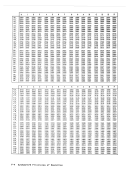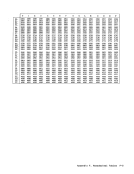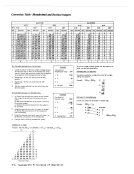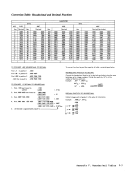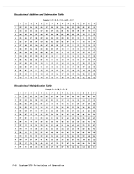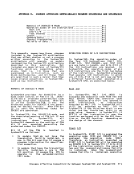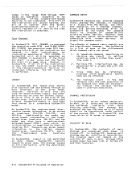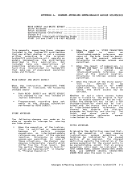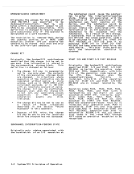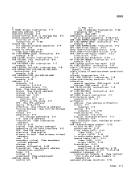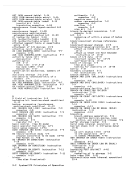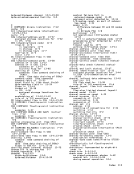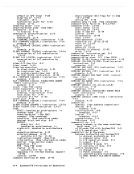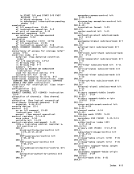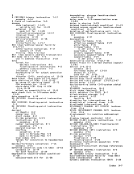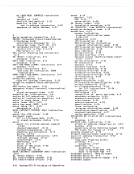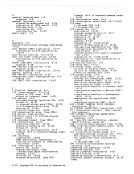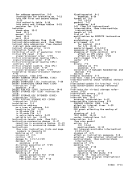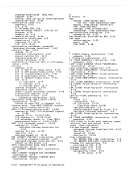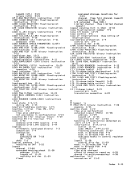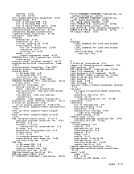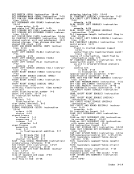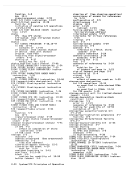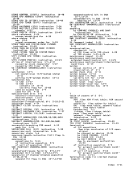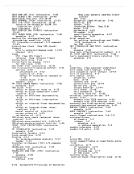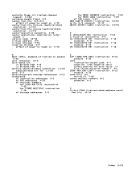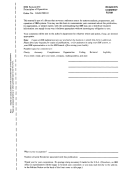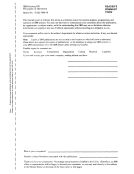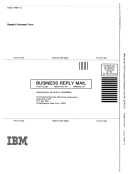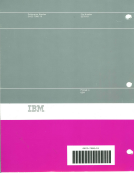Storage-operand references are of three
types:fetches, stores, and updates. Storage-Operand Fetch References When the bytes of a storage operand
participate in the instruction execution
onlyas a source, the operand is called
a fetch-type operand,and the reference to the location is called a storage
operand fetchreference. A fetch-type
operand is identified in individual
instruction definitions by indicating
that theaccess exception is for fetch.
All bits withina single byte of a fetch
reference are accessed concurrently.
Whenan operand consists of more than
onebyte, the bytes may be fetched from
storage piecemeal, one byteat a time.
Unless otherwise specified, the bytesare not necessarily fetched in any
particular sequence.
The storage-operand fetch references of
one instruction occurafter those of all
preceding instructions and before those
of subsequent instructions,as observed
by otherCPUs and by channels. The
operands of anyone instruction are
fetchedin the sequence specified for
that instruction.Storage-Operand Store References When the bytes of a storage operand
participate in the instruction execution
onlyas a destination, to the extent of
being replaced by the result, the oper
and is calleda store-type operand, and
thereference to the location is called a storage-operand store reference. A
store-type operand isidentified in
individual instruction definitions by
indicating that theaccess exception is for store.
All bits withina single byte of a store
reference are accessed concurrently.
When an operand consists of more thanone byte, the bytes may be placed in
storage piecemeal, one byte at a time.
Unless otherwise specified, the bytes
are not necessarily stored 1n any
particular sequence.
TheCPU may delay placing results in
storage. There is no defined limit on
the length of time that resultsmay remain pending before they are stored.
Thisdelay does not affect the sequence
in which resultsare placed in storage.
The results of one instruction are
placed in storage after the results ofall preceding instructions have been
placed instorage and before any results
of the succeeding instructionsare stored, as observed by other CPUs and by
channels. The results of anyone
instructionare stored in the sequence
specified for that instruction.
TheCPU does not fetch operands or DAT table entries from a storage location
untilall information destined for that
location by theCPU has been stored. Prefetched instructions may appear to be updated before the information appears
in storage.
The stores are necessarily completed
only asa result of a serializing opera
tion and before theCPU enters the
stoppedstate. Storage-Operand Update References
In some instructions, the storage
operand locationparticipates both as a source and as a destination. In these cases, the reference to the location
consists first ina fetch and subse
quently in a store. The operand iscalled an update-type operand, and the
combination of the two accesses is
referred toas an update reference.
Instructions such asMOVE lONES, TRANS
LATE,OR (OC, 01), and ADD DECIMAL cause an update to the first-operand location.
An update-type operandis identified in the individual instruction definition by
indicating that the access exception is
for both fetch and store.
For most instructions whichhave update-type operands, the fetch and
store accesses associated with an updatereference do not necessarily occur one immediately after the other, and it is possible for other CPUs and channels to
make fetch and store accesses to the
same location during this time. Such an
updatereference is sometimes called a
noninterlocked-update storage reference.
For certain special instructions, the
update reference is interlocked against
certain accesses by otherCPUs. Such an
update reference is called an
interlocked-update reference. The fetch
and store accesses associated with an
interlocked-update reference do not
necessarily occur one immediately after
the other, but all store accesses and
the fetch and store accesses associated
with interlocked-updatereferences by
otherCPUs are prevented from occurring
at the same locationbetween the fetch
and the storeaccesses of an
interlocked-update reference. Accesses
by channels may occur to the location
during the interlock period.
The storage-operand update references
for the following instructions appear to
be an interlocked-update reference as
observed by otherCPUs. The instruc
tions TEST ANDSET, COMPARE AND SWAP, Chapter 5. Program Execution 5-29
types:
participate in the instruction execution
only
a fetch-type operand,
operand fetch
operand is identified in individual
instruction definitions by indicating
that the
All bits within
reference are accessed concurrently.
When
one
storage piecemeal, one byte
Unless otherwise specified, the bytes
particular sequence.
The storage-operand fetch references of
one instruction occur
preceding instructions and before those
of subsequent instructions,
by other
operands of anyone instruction are
fetched
that instruction.
participate in the instruction execution
only
being replaced by the result, the oper
and is called
the
store-type operand is
individual instruction definitions by
indicating that the
All bits within
reference are accessed concurrently.
When an operand consists of more than
storage piecemeal, one byte at a time.
Unless otherwise specified, the bytes
are not necessarily stored 1n any
particular sequence.
The
storage. There is no defined limit on
the length of time that results
This
in which results
The results of one instruction are
placed in storage after the results of
placed in
of the succeeding instructions
channels. The results of anyone
instruction
specified for that instruction.
The
until
location by the
in storage.
The stores are necessarily completed
only as
tion and before the
stopped
In some instructions, the storage
operand location
consists first in
quently in a store. The operand is
combination of the two accesses is
referred to
Instructions such as
LATE,
An update-type operand
indicating that the access exception is
for both fetch and store.
For most instructions which
store accesses associated with an update
make fetch and store accesses to the
same location during this time. Such an
update
noninterlocked-update storage reference.
For certain special instructions, the
update reference is interlocked against
certain accesses by other
update reference is called an
interlocked-update reference. The fetch
and store accesses associated with an
interlocked-update reference do not
necessarily occur one immediately after
the other, but all store accesses and
the fetch and store accesses associated
with interlocked-update
other
at the same location
and the store
interlocked-update reference. Accesses
by channels may occur to the location
during the interlock period.
The storage-operand update references
for the following instructions appear to
be an interlocked-update reference as
observed by other
tions TEST AND
























































































































































































































































































































































































































































